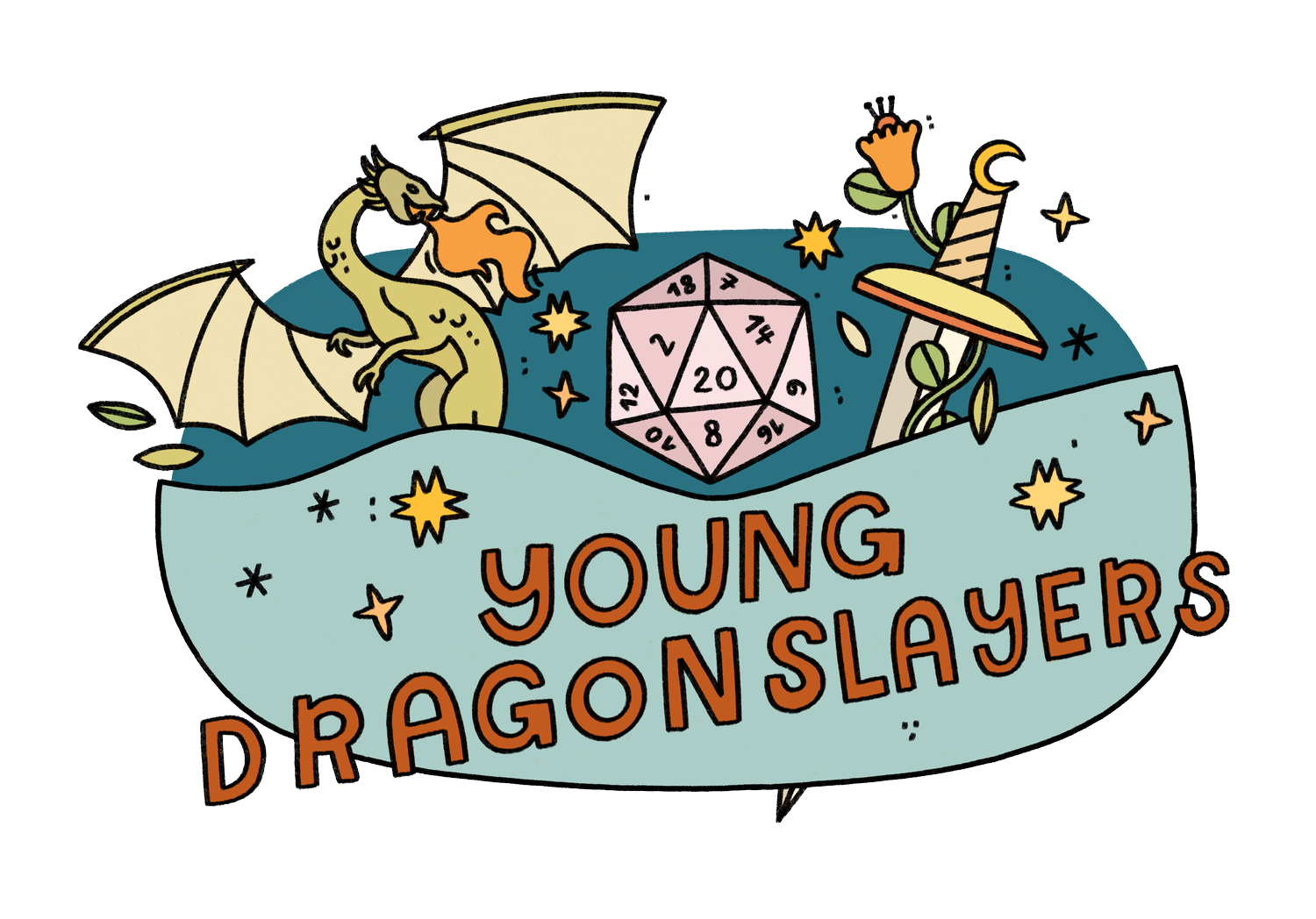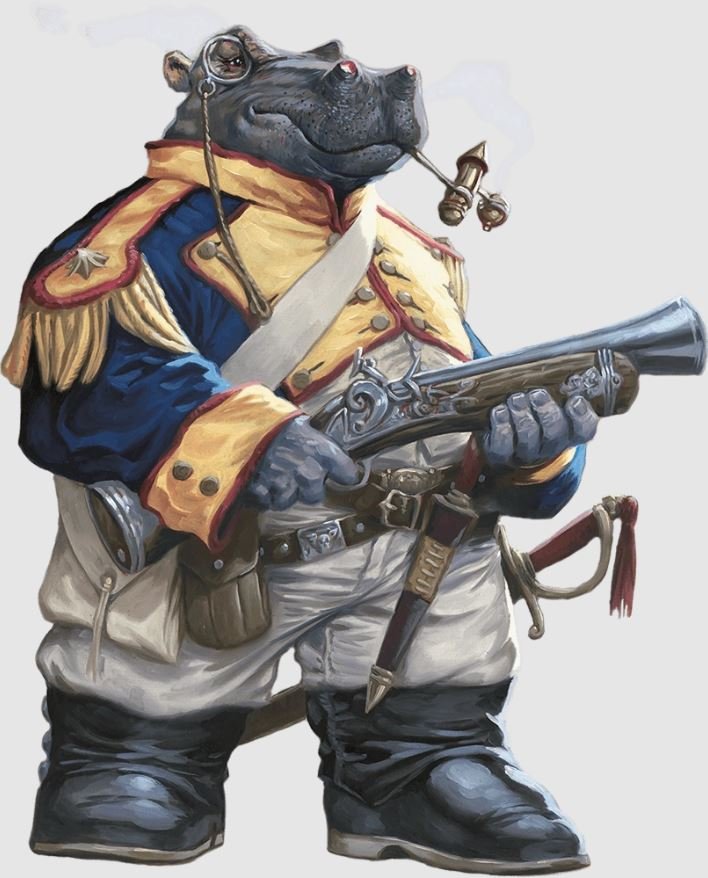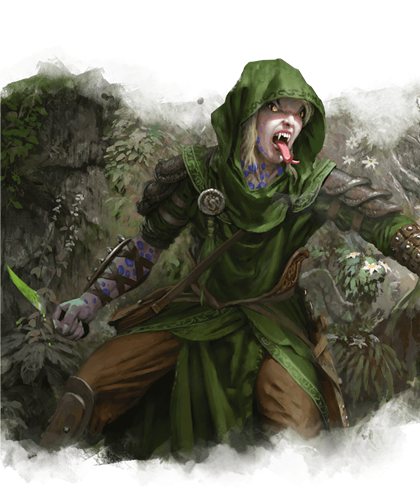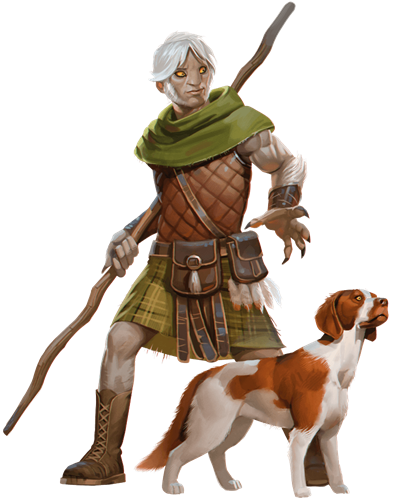How to Play As Your Favorite Animal In D&D
Part of what makes Dungeons & Dragons so fun is the ability to create and play your very own character. Will you be a tinkering artificer, creating clockwork companions and battle-ready flamethrowers? Or will you be a nature-loving druid, summoning plants and transforming into animals? All of these are a character’s “class,” but Dungeons & Dragons (D&D) also allows you to choose a character’s “race” (this is what they call a character's genetics or ancestry). Most of D&D takes place in a world of high fantasy and focuses on races like dwarves, stout and hardy warriors known for their skills in metalworking, or elves, graceful and beautiful beings known for their skills in magic and love of nature.
But your options go way beyond that; your character can have ancestors who were angels, demons, or elementals, be creatures of folklore like fairies, tritons, or changelings, or share prominent features with real-world animals like crows, cats, and turtles. This article will go over your options for the latter, giving you plenty of ideas to create your own D&D character inspired by your favorite animals!
Beautiful Birds: Aarakocra, Kenku, and Owlin
If you love birdwatching or wish you yourself could one day spread your wings and soar through the skies, you might enjoy playing as an aarakocra, a race resembling large birds such as eagles, a kenku, a race resembling corvids such as crows, or an owlin, a race that, as it sounds, resembles owls.
Aarakocra come from the Elemental Plane of Air and are skilled in traversing the skies. Each of them can fly just as quickly as they can walk (provided they’re not wearing clunky armor), slash enemies with talons from above and, as they develop, summon the element of air to create mighty winds.
Kenku are born without wings, but they have unnaturally good memory and amazing observation abilities. Because of this, they’re great at crafting or writing objects they’ve seen before and have some notable boosts to ability checks. Much like their real-life counterparts, kenku can accurately mimic sounds, including the voices of others.
Owlin come from a magical realm called the Feywild and bear strong but quiet wings. They are able to fly just as the aarakocra do, but they are more subtle, moving quietly and sneaking up on others
Bulky Bulwarks: Giff and Loxodon
If you’re looking to play a character inspired by the strong and hardy creatures of the world, you might enjoy playing as a giff, a race resembling hippos, or a loxodon, a race resembling elephants. Both races are quite large (standing between 7 and 8 feet tall), have high Constitution, and can carry heavy weights far greater than humans.
Giff’s origins are unknown, but they’re drawn to the Astral Plane, a connection that gives them mystical abilities in battle. Giff have a particular affinity for firearms, which they can build and use with great accuracy and skill.
Loxodons are a peaceful people with a talent for stone working. Their natural serenity makes them difficult to manipulate; their elephant-like builds give them strong defense, and their trunks give them a phenomenal sense of smell and the ability to grasp and move objects.
Hoofing It: Centaur and Satyr
If you love riding horses or spending time in stables, you may enjoy playing as a centaur or satyr; both of these creatures have the top half of an elf, but the bottom halves of horses (for centaurs) and goats (for satyrs - plus a pair of horns on their elven head)! Both come from the Feywild, like the owlin, but this origin is embodied in different ways.
Because of their origins in the Feywild, centaurs have an affinity for the natural world. Their horse bodies also give them additional skills in climbing, the ability to charge at their enemies, and mighty hooves with which to bash any in their path.
Satyrs’ connection to the Feywild makes them natural performers and partiers; they can play music, persuade others, and resist unwanted magical influence. Their goat legs allow them to leap to great heights, and their horns can be used as a weapon in a pinch.
Paws-itively Perfect: Harengon and Tabaxi
If you have adorable pets in your home and want to play a character inspired by them, you may enjoy playing as a harengon, a race resembling rabbits, or a tabaxi, a race resembling cats.
Like many of these animal-like races, Harengons originate in the Feywild. They have little bit of fey luck and a lot of acrobatic ability. Because of their large ears and strong legs, they can move quickly, sense danger, and perform great leaps.
Tabaxi have my favorite origin of any D&D creature; they were created by the Cat Lord, a divine being “neither good nor evil but concerned with cat-things alone.” Tabaxi’s catlike form give them fantastic agility, excellent senses, and the ability to sneak up on their enemies. Additionally, they can use their claws as weapons, much like the centaur’s hooves or the satyr’s horns.
Scales and Tails: Lizardfolk and Yuan-Ti
If you’re more a fan of creatures who sneak and slither, you may enjoy playing as a lizardfolk, a race resembling lizards, or the yuan-ti, a race that’s a mix of humans and snakes.
Lizardfolk have been on the Material Plane as long as it’s existed, and they have a mythical connection to nature that allows them to easily learn to interact with animals, use medicine, or traverse nature. Their lizardlike features give them tough defenses from their scales, the ability to hold their breath for long periods of time, and mighty teeth than can be used as a weapon or to perform a special attack, launching them into a feeding frenzy.
Yuan-Ti, on the other hand, were once humans, but they gave themselves serpentine features and abilities. Perhaps the most convenient among these is a natural resistance to magic and poison. They also can use their innate magic abilities to summon poison, befriend snakes, and beguile the unwary.
Under the Sea: Grung, Locathah, and Tortle
If you can spend hours at an aquarium or find yourself at home in the water, you may enjoy playing as a grung, a race resembling frogs, a locathah, a race resembling fish, or a tortle, a race resembling turtles.
Grung usually keep to themselves in their natural environments and have a distinct culture built on the concepts of hierarchy and subjugation. Much like several species of real-world frogs, they’re naturally toxic to the touch. Grung also can naturally breathe both air and water, but they need to spend some time in water every day or become terribly dehydrated.
Locathah reside in the water near the coasts. They can breathe water for as long as they want, and they can breathe air for a few hours at a time - helpful, but not ideal for adventures on land. However, they are a resilient race, with tough, scaly skin serving as armor, a strength of will that lets them resist many negative status effects, and natural skills in athletics and perception.
The tortles have a mystical connection to the natural world and tend to reside near the water. This connection, much like the lizardfolk, gives them the ability to quickly learn how to deal with animals, perform medical care, or survive in nature. Their shells serve as excellent armor when walking around and a place to withdraw for protection in emergencies. But if they would like to emerge and enter the thick of battle, they can attack their enemies with natural claws.
None of the Above: Playing a Shifter
If you don’t see your favorite animal in this list, you can always play as a shifter, a human-like race with some kind of animal aspect they can shift into. The concept is similar to a werewolf, only with other animals, like rats, tigers, or dogs. At any time, a shifter can transform into their beast form and gain the benefit of their chosen animal: natural defenses from scales or hide, extra speed from animal legs, attacks from fangs or claws, or other abilities.
If you’d like to play a character who looks like an animal all of the time, you can also talk to your Dungeon Master and ask them to reskin another race. One of my players wanted to be a fox, so we reworked the catlike tabaxi as a fox, which worked perfectly for their sneaky rogue.
Ready for an Animal Adventure? Join Us for D&D.
If you’ve got a great idea for an animal-inspired Dungeons & Dragons character, but you don’t have anywhere to play them, why not join one of our games at Young Dragonslayers™? I and the other awesome Dungeon Masters here can work with you to create exactly the character you want (whether you’ve been playing for years or never touched the game), and you can bring that character in a world of exciting fantasy adventure with other tweens or teens.
Click the button below (or this link right here) to learn more about how to enroll in our upcoming games. Our ten-week campaigns allow players to get to know each other and tell a satisfying story—no need to wrangle your friends or find a skilled DM, just show up and play!
















